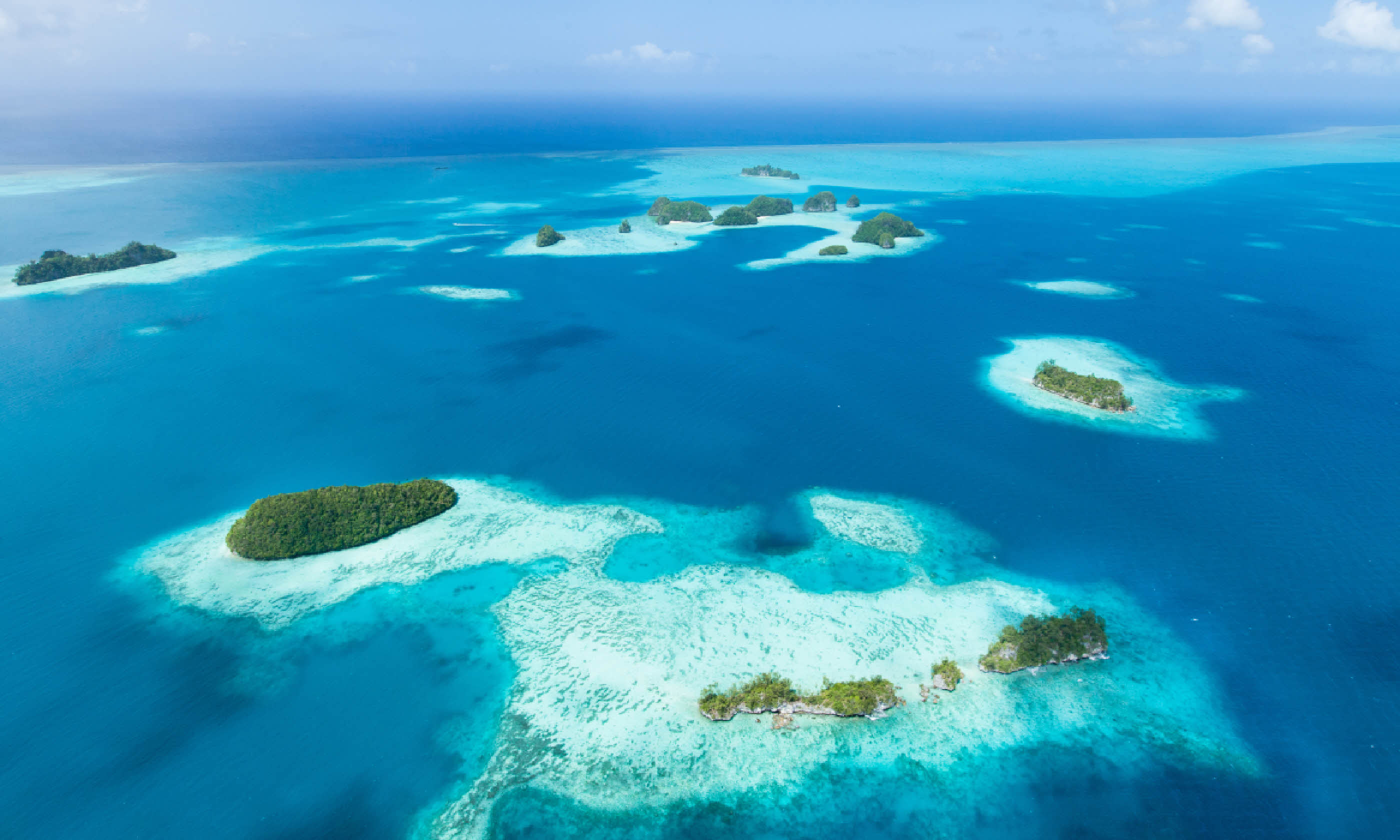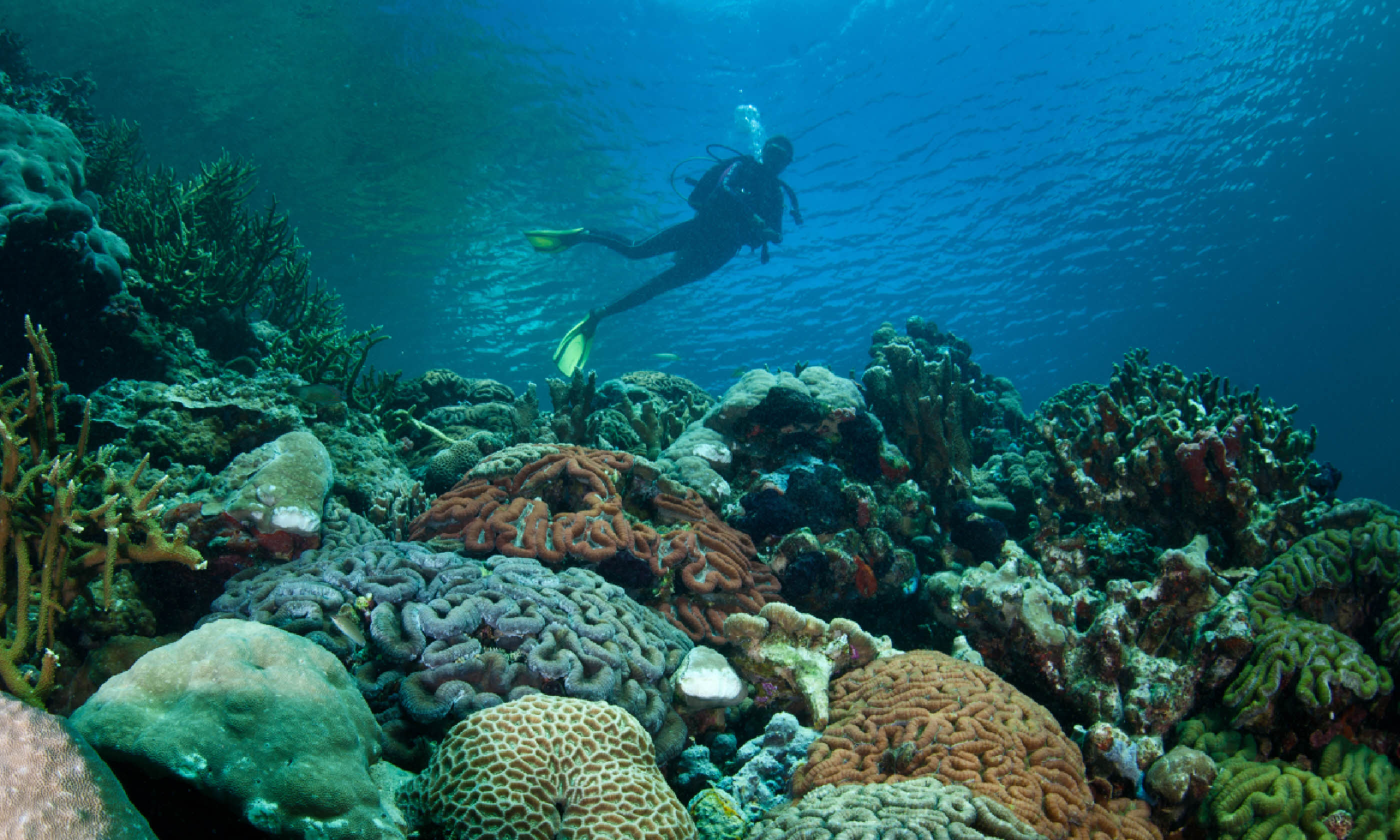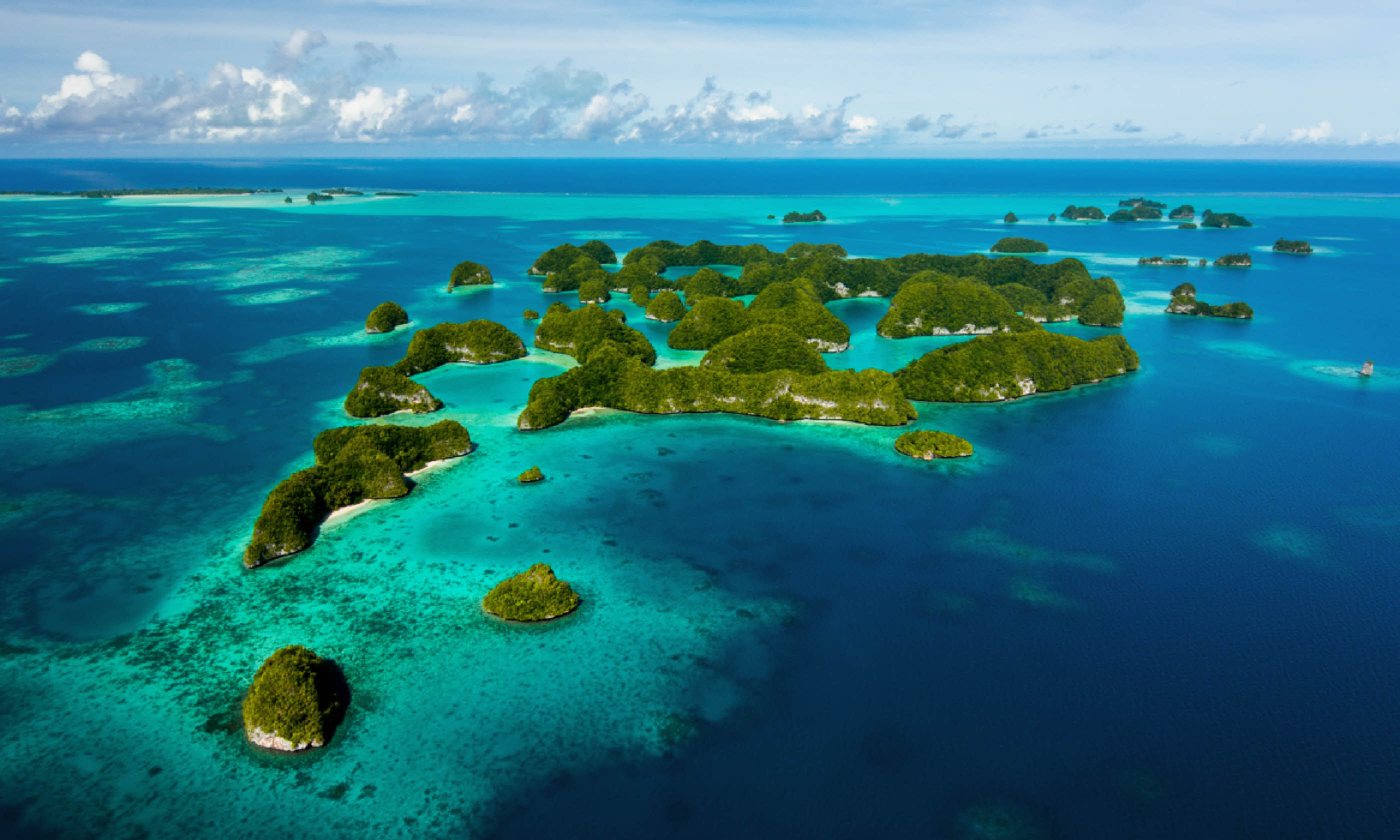
6 things you never knew about Palau
Known as the 'jewel of Micronesia', this idyllic archipelago is full of intrigue – from friendly jellyfish to glorious mud...
1. You can swim with jellyfish
Jellyfish Lake, off the island of Eil Malk, is home to millions of jellyfish that are no longer a threat to humans. There are no predators in the lagoon so their poison has been weakened over time, making it safe to swim in a sea of jellyfish. Yikes! Catch a boat and dive straight into the lagoon to experience the strange sensation of these creatures floating all around you. Their striking golden hue creates a beautiful shimmering effect that can be seen from the boat if you don't fancy the swim.
2. Even its mud is special
The Milky Way lagoon, named after the white mud at the bottom of the cove, is famous for its use in natural spa treatments. The mud is said to have healing and anti-ageing properties for anyone who indulges in slathering the slimy substance all over their body. The lagoon is part of one of the Rock Islands; a cluster of more than 250 limestone formations that are mostly uninhabited.
 Diver exploring Palau
Diver exploring Palau
3. The first western visitors were shipwrecked there
In 1783, Henry Wilson, an English naval captain of the British East India Company, was shipwrecked on Ulong Island with his crew. They lived there for several months and were treated kindly by the Palauans who traded their bananas and food for the sailors' cigarettes and whisky. They formed a strong friendship and worked together to rebuild the shipwrecked boat. When they returned to England, an alliance was formed and Britain became Palau's main trading partner.
4. Palau created the world's first shark sanctuary
In 2009 it was announced that shark fishing and finning (the process of cutting off fins) were officially banned in Palau. There are over 130 different species of shark in Palau, and diving with them is an increasingly popular attraction. Many conservationists are hoping that other countries will be inspired by Palau's decision. Head to the aptly named dive site Shark City and the Big Drop Off for a chance to scuba alongside them.
 Seventy Islands, Palau (Shutterstock)
Seventy Islands, Palau (Shutterstock)
5. You can see 4,000-year-old artefacts
The small island of Ulong is considered Palau's greatest archaeological treasure. Preserved remnants of goods made from shells and clay pots, used by the earliest settlers, are believed to date back 4,000 years. These fascinating artefacts, as well as the cave paintings and carvings on ancient rocks, give many clues about the lives of the early Micronesians.
6. There is a surprisingly beautiful WWII stronghold
Originally built by the Germans, the 100-year old lighthouse was taken and improved by Japanese engineers who put cannons and anti-aircraft guns around the site. Nowadays, it is a popular spot for its spectacular views and the tropical birds who nest by the lighthouse.


